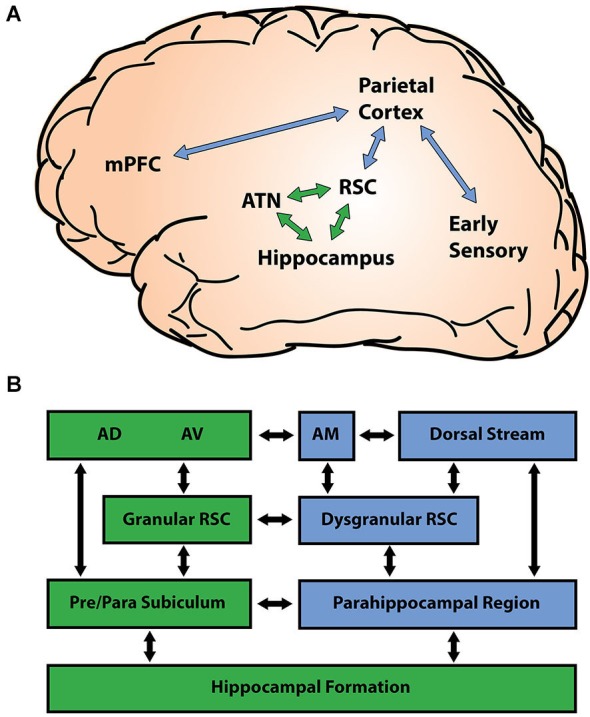Figure 1.

Retrosplenial connectivity. (A) The retrosplenial cortex (RSC) is centrally positioned between cortical sensory regions (blue) and limbic memory regions (green). The parietal lobe merges information arriving from early sensory areas, and shares connectivity with both the medial prefrontal cortex (mPFC) and the RSC. Reciprocal connections between the RSC, anterior thalamic nuclei (ATN), and the hippocampus (HPC) constitute a limbic memory circuit that is essential for many forms of learning and memory. (B) The RSC shows regional differences in connectivity with limbic (green) and cortical (blue) regions. The granular RSC (areas 29a-c) shows greater connectivity with limbic regions such as the subicular cortex and the antero-dorsal (AD) and antero-ventral (AV) nuclei of the ATN, while the dysgranular RSC (area 30) shows greater connectivity with cortical regions including the parahippocampal region, the posterior parietal cortex, and early visual areas. The connections of the ATN also differ by region, with the AD and AV nuclei showing greater connectivity with limbic areas and the antero-medial (AM) nucleus showing greater connectivity with neocortical regions.
